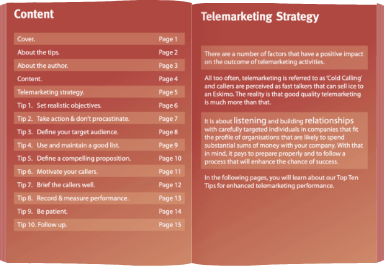Marketing and lead generation are tough disciplines. They’re not easy to get right. And, they’re costly to get wrong. What’s more, if it was that easy, everyone would be doing it, right? Therein lies the problem. And, that’s why the more integrated you can make your marketing efforts, the better. That’s certainly the case when it comes to B2B telemarketing. All too often, organisations rely on cold calling in isolation to try to fuel growth in their business. But, why make a cold call when you can make a warm one?
Warm Calls not Cold Ones
Connecting with potential customers, across channels, is essential. While cold calling has been around for years, and is a traditional approach which is sometimes necessary, it makes total sense to reduce the ‘cold’ nature of a call and to maximise its warmth.
Warm calls involve reaching out to individuals who have already shown interest or have an existing relationship with your company. Warm calls will always be more engaged, and likely to convert, than cold ones. That means, where possible, focusing on scenarios like following up on event leads, engaging lower-spending customers, re-engaging inactive customers, and reaching out to website visitors and form fillers. Let’s take a look at some of these scenarios.
Following Up on Event Leads
Following up on event leads is a prime opportunity to make warm calls. When attendees show interest in an event, they are more likely to be receptive to a follow-up call. By making a warm call, sales representatives can reference the shared experience, reinforce the value proposition discussed during the event, and build upon the established rapport. This personal touch increases the likelihood of converting event leads into valuable customers whether you have met them on your, or their, stand, or just attended the same event.
Increasingly, webinars also provide a good source of leads that demand further qualification. If you’re running your own webinar, or partnering with another company, the sooner you follow up attendees that have demonstrably shown interest in the topic, the better. And, don’t forget that those that signed up but didn’t attend can also form part of a warmer calling cycle.
Engaging Lower-Spending Customers
Not every company is fortunate enough to have a large pool of repeating customers that they can nurture. Even those that do experience this kind of pattern, may have customers on the fringes i.e. those that spend infrequently, or that spend low amounts.
Existing customers who are lower-spending often represent untapped potential. A warm call to these customers demonstrates genuine care and interest in their business. By acknowledging their loyalty and understanding their specific needs, sales representatives can provide tailored solutions and unearth upsell opportunities. Warm calls enable a personalised approach that strengthens the relationship, increases customer satisfaction, and ultimately leads to higher spending and customer retention.
Re-engaging Inactive Customers
There are various reasons why Inactive customers may have drifted away. These include changing needs or competing offers, and changes in management amongst other reasons. It’s important to not allow this to drift too far or the bond will be truly broken.
This form of ‘warm’ resuscitation calling can be a powerful tool to rekindle dormant client relationships. By reaching out to inactive, low-spending and/or infrequent purchasers, you demonstrate that you value their business. You show that your company is committed to addressing any latent concerns. This type of outbound calling provides an opportunity to understand the reasons behind their inactivity, and to provide targeted solutions. It allows you to re-acquaint them with your company’s products or services, and tempt them with offers and promotions.
Reaching Out to Website Visitors and Form Fillers
When visitors explore your company’s website, and provide their details through a contact form, this generally indicates an interest in the products or services offered. Whilst these inbound enquiries are by no means all of high quality, they do suggest a degree of intent. Work still needs to be done to profile, filter and qualify the leads before you can deem them ‘hot’. Yet, this type of lead at least means that they are aware of your company, what you offer, and have taken an active interest.
Making a warm call, swiftly, in response to these interactions can significantly enhance their early customer experience. By initiating a conversation based on their expressed interest, organisations can offer personalised assistance, answer questions, and provide additional information. This approach creates a human connection, establishes trust, and increases the likelihood of conversion.
Opens, Click Throughs, and Connections
Whilst statistics that show those individuals that have opened and/or clicked a link in an email do not always demonstrate genuine interest, it does provide a base for a call. If your initial segmentation and targeting are accurate, you’d like to think that opens and click-throughs are another sign of positive intent. Often, a simple click through isn’t an enquiry per se. However, it is a stage of the customer journey that warrants a follow-up. Naturally, you need valid phone numbers to do this. Nevertheless, assuming you have these contact details, making a quick call may move your chance of a sale forward.
Online to Offline
Warm calls can also be employed in other scenarios. For instance, when customers have interacted positively on social media platforms, a warm call adds a personal touch and solidifies the relationship. Taking an online relationship, such as a connection on LinkedIn, offline to a call, can provide proof that you’re not just a connection gatherer. If there’s a good reason to call, such as for an event, white paper or some other useful reason, a call at the right time can stimulate potential enquiries.
Quid Pro Quo – Resellers
Back-scratching is usually a good reason to engage. Whilst a cold call to someone that could resell your services isn’t exactly warm, where there is mutual benefit, the nature of the call becomes less ‘cold’. We have run plenty of campaigns where there is mutual gain. For example, a Financial Advisor/Wealth Manager relationship with an accountant, or a small video production agency with larger agencies that may need to outsource overflow work. There are lots of examples where partnering with vendors in the same field can bear fruit if a call is made at the right time.
Conclusion
Sometimes, a cold call is both warranted and necessary. Some organisations may just not be in the position to benefit from inbound leads from a web form, responses to an email broadcast, or attendees from an event. There is certainly a place for cold outreach. However, warm calls offer a multitude of advantages over cold calls.
By focusing on individuals who have already shown interest or have an existing relationship, warm calls provide a personalised and targeted approach. Whether following up on event leads, engaging lower-spending customers, re-engaging inactive customers, or reaching out to website visitors and form fillers, warm calls allow for meaningful connections to be established, leading to higher conversions, better customer satisfaction, and long-term loyalty.






